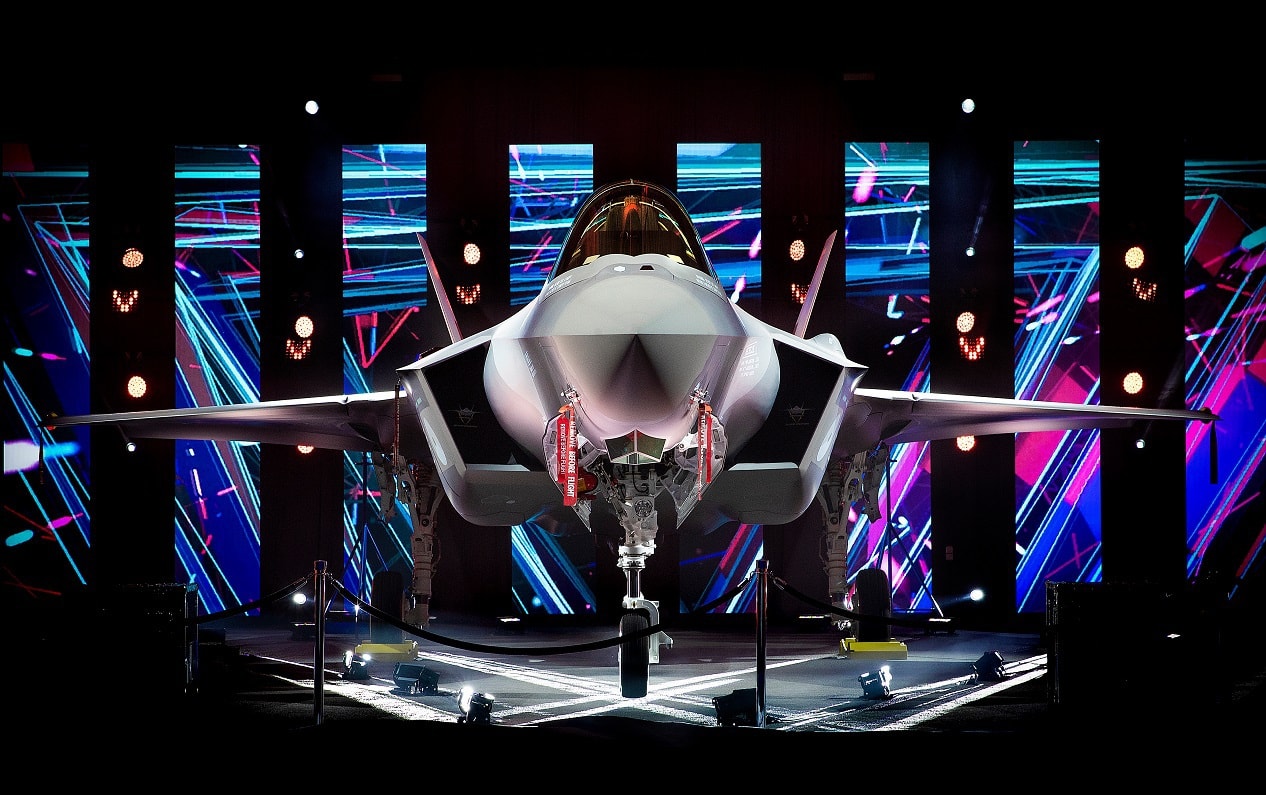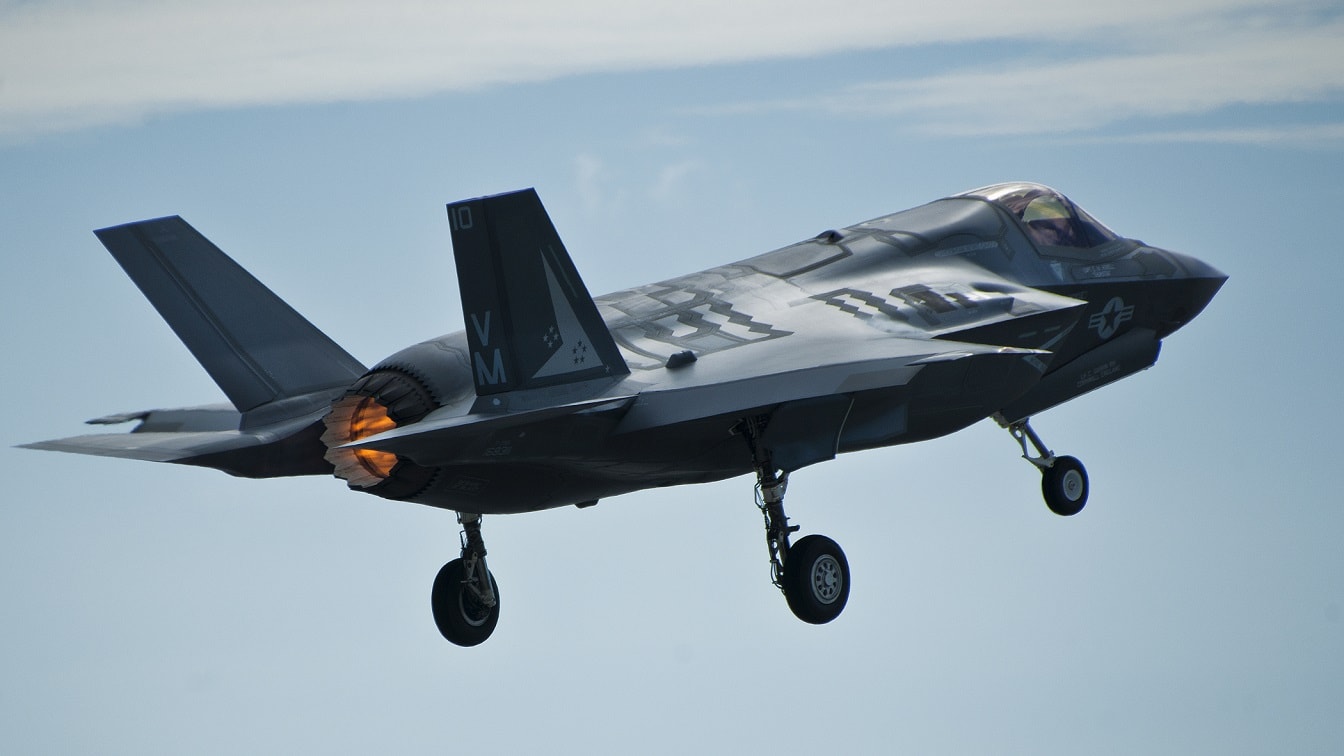Article Summary: Ukraine’s air force has struggled against Russia’s superior numbers, and while F-16s offer some improvements, they are older models with limitations. Could Ukraine someday fly the F-35?
Key Point #1 – While the U.S. prioritizes NATO allies for F-35 sales, countries like Romania and Poland have placed orders, raising questions about Ukraine’s future eligibility.
Key Points #2 – Challenges include cost, training, cyber security, and the risk of technology falling into Russian hands. While an F-35 deal is unlikely in the short term—especially with ongoing peace negotiations—it could remain a long-term goal that could significantly bolster Ukraine’s defense against future threats from Russia.
Could Ukraine Fly F-35s Someday? Yes, It is Possible
While the Ukrainian air force did not perform poorly during the air war with Russia, it did not exactly dominate either.
Some of this concerns the quality of its fighter planes, and the Ukrainians hoped that the F-16 would be a difference maker in the aerial war.
However, the F-16s Ukraine has received are older fighter versions that cannot fire long-range missiles and thus are mainly effective only against enemy drones and missiles.
The F-16s remained out of range of Russian fighters. The older Fighting Falcons from the Netherlands and Denmark also have issues with radar range, avionics, and overall lethality, as they can sometimes be outclassed by newer Russian fighters.
Go for the Best Fighter
This raises the question: are there any other airplanes that Ukraine could receive that would sway the balance of the air war in Kyiv’s favor?
Why not go for the best and request that Ukraine get F-35 stealth fighters from the United States?
Romania just ordered a number of F-35s to perch on Russia’s doorstep.
F-35: Could Ukraine Get Them, Too?
Ukraine Could Play Offense Not Just Defense
This would be quite a departure for Ukrainian pilots who have never flown such an advanced stealth airplane.
The aviators would have to be trained extensively for at least a year, and ground crews would also have to be prepared to keep the F-35s flying at a high operational tempo.
The F-16s the Ukrainians are currently flying are more for defensive purposes to protect Ukrainian cities and military installations from attack rather than offensive operations that could threaten targets on the other side of the Russian border.
Ukraine seems content to allow drones to attack Russia rather than manned aircraft.
Ukrainian Pilots Are Answering the Call
Ukrainian pilots have successfully utilized the F-16 for homeland defense and air policing. A Ukrainian F-16 aviator recently shot down “six Russian missiles using only four air-to-air missiles” in one mission. Based on those exploits, Ukrainian pilots have learned quickly on how to best fly the F-16.
Meanwhile, Ukraine’s European allies are buying the F-35 in numbers. The Czech Republic, Poland, and Finland have placed orders. This is what I call “fighter plane diplomacy,” and it entails using advanced airplane exports from the United States to increase the lethality and strength of NATO and its members while stoking goodwill with the Americans. Could Ukraine be next?
F-35s in Ukraine would surely anger the Russians. They would see these airplanes as a threat that could sway the balance in the air war. So, if Volodymyr Zelensky wants to enter peace negotiations soon, announcing an F-35 purchase would hinder those efforts.

F-35. Image Credit: Lockheed Martin.
Also, by the time the F-35s were available, the war could be over. However, the Lightning IIs would allow the Ukrainian air force to better patrol the resulting demilitarized zone should an armistice be consummated with Russia.
Losing an F-35 Would Be Disastrous
One problem with the F-35 in potential combat with Russia would be if any Lightning IIs were shot down, it would be a disaster.
Russia would make it a major public relations victory if they downed an F-35, and they could also steal sensitive technologies from any wreckage they secured from a shoot-down.
Russian technicians and engineers could reverse-engineer some components.
The Path to Ukraine Flying the F-35
To be awarded an F-35 deal, the Ukrainians must also show they are willing to modernize its air force and allow its pilots and ground crews to handle a “flying computer.”
Ukraine would have to make sure that the software systems that power the airplane would not be the victims of a Russian cyberattack.
Ukraine would also need special permitting and an agreement that would entail future spare parts and munitions to keep the advanced fighter flying effectively. The Air Force would need to find a way to service and maintain the airplane expertly, too.

U.S. Marine Corps F-35B Lightning ll aircraft with Marine Fighter Attack Squadron (VMFA) 121 prepare for takeoff from Marine Corps Air Station Iwakuni, Japan, April 8, 2021. VMFA-121 is the first forward deployed Marine F-35B squadron, capable of providing close air support and conducting strike missions in support of a free and open Indo-Pacific. (U.S. Marine Corps photo by Cpl. Jackson Ricker)
Unlike Romania, Poland, Finland, and the Czech Republic, Ukraine is also not a NATO member. This makes exporting the F-35 more difficult because the United States places additional emphasis on having NATO allies purchase the most sensitive military technologies. In contrast, non-NATO members are placed in a different category for arms exports.
F-35s Are Cost Prohibitive
The F-35 is also expensive – running around $80 to $100 million each. This could be prohibitive for Ukraine, which is suffering from so many losses on the battlefield and the need for arms and ammunition for land warfare.
Money and resources are tight, and the F-35 would require a huge investment.
So, an export order of F-35s to Ukraine is not likely in the short-term, but it should not be ruled out in the next three to five years. At that point, the war would be over, and Ukraine would be on sounder footing financially. It could someday have the resources and technological know-how to handle such a modern airplane.
Now is not the right time; peace negotiations should begin this summer. If Ukraine announced some type of F-35 deal, that would kneecap cease-fire talks. However, the Ukrainian air force should have long-term strategic goals that would make an F-35 purchase a worthy objective. Russia will always be a threat, and having a stealth fighter that its neighbors also fly makes sense. It just won’t happen anytime soon.

F-35. Image Credit: Lockheed Martin.
About the Author: Dr. Brent M. Eastwood
Brent M. Eastwood, PhD, is the author of Don’t Turn Your Back On the World: a Conservative Foreign Policy and Humans, Machines, and Data: Future Trends in Warfare, plus two other books. Brent was the founder and CEO of a tech firm that predicted world events using artificial intelligence. He served as a legislative fellow for U.S. Senator Tim Scott and advised the senator on defense and foreign policy issues. He has taught at American University, George Washington University, and George Mason University. Brent is a former U.S. Army Infantry officer. He can be followed on X @BMEastwood.

